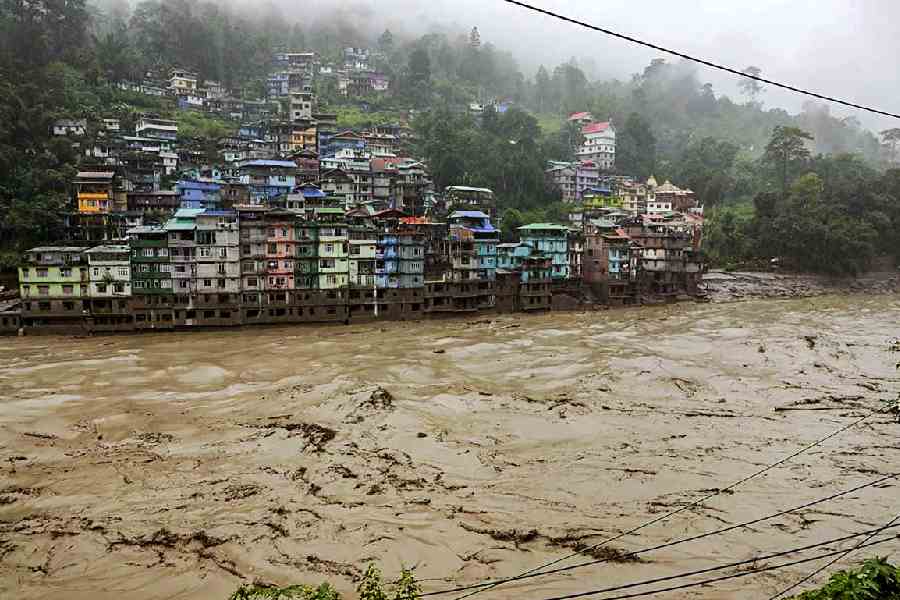A 28-year-old Kolkatan who teaches in a school in flash flood-ravaged Singtam in Sikkim returned home on Saturday.
Niladri Sengupta, a resident of Kankurgachhi, narrated to The Telegraph how he saw his school building get submerged under the floodwaters early on October 4. He described running to the highest point nearby to save his life.
A cloudburst and the flash flood that it triggered killed at least 22 and rendered thousands homeless in the Himalayan state. Scores of people are still missing.
Excerpts from what Sengupta said follow
I teach at the Kendriya Vidyalaya inside the National Hydroelectric Power Corporation’s Singtam complex. Both the school and our living quarters are a stone’s throw from the Teesta river.
On Thursday, it had been raining heavily.
Around 3am, I woke up with a start as the noise of water gushing at full force became very loud. Then there were the sounds of snapping and crashing of trees.
I flicked on the light switch but there was no power. It was pitch dark and I could see very little. But the sound of the huge waves of water crashing against the school building was hard to miss. I ran out of my quarter.
I stay on the first floor and managed to get my torch out.
As I shone the torch towards the school building from the balcony of my living quarters, I could no longer see the ground floor of the building. It was under water.
I made a run for the nearby power station’s O point — a designated high ground.
As I made a mad scramble for it, I could hear the buildings around crumbling. It was scary, dark and raining. Although I am not a very religious person, I had a prayer on my lips as I climbed to the higher ground.
I slipped twice and I prayed that I would not fall into the river. Finally, I managed to reach the high ground and saw that many of my colleagues and their families were also there along with some of the villagers.
Nearly everyone had fear on their faces as we could see nothing but could figure out from the noise that the river was wreaking havoc all around us.
We stayed at the 0 point till 6am.
The day had broken and we could faintly see the outline of the roof and a portion of the first floor above the level of the river water that was raging around it.
By this time, a few villagers who stay a short distance away from the school had joined us. They informed us that the lower bridge near Adarsh Gaon, a 10-minute drive from the school, had been swept away. That is our nearest bridge.
A few of my colleagues and I decided to try and get to my quarters and pack up my belongings and wait for rescue teams.
As we made our way down, we saw that the water had reached near the doorstep of a cluster of quarters at a level lower than ours.
On Thursday, a rescue vehicle made its way up through the upper bridge near the Singtam petrol pump. We were advised to walk.
I walked for around 5km and everywhere there was thick slush till we reached the point where vehicles could reach.
We waited for some time and then a jeep arrived. We travelled towards Majithar and then Rangpo. From there, we went to Siliguri via Kalimpong.
It rained throughout the drive and the terrain was extremely slippery, steep and difficult.
On multiple stretches, vehicles had to pass slowly and one at a time so the loose soil did not crumble.
